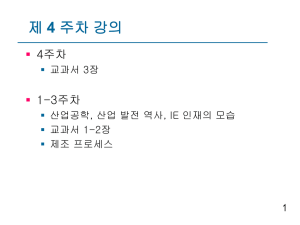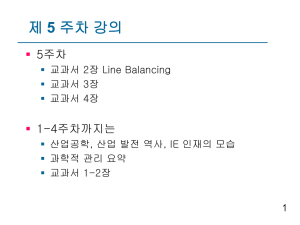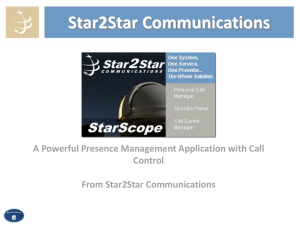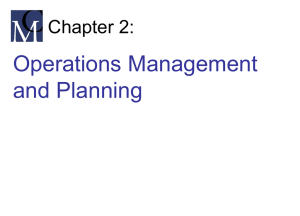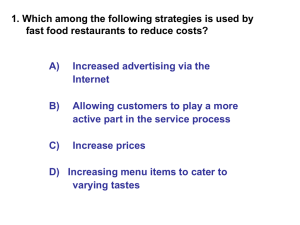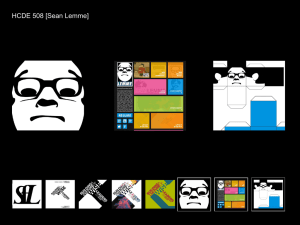Technical Report Writing: Purpose, Structure, Layout
advertisement
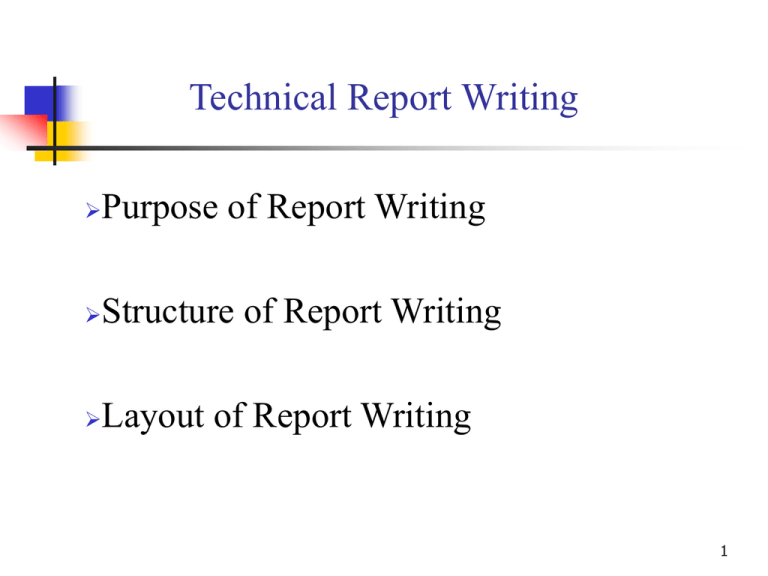
Technical Report Writing Purpose of Report Writing Structure of Report Writing Layout of Report Writing 1 Purpose of Report Writing A technical report is a set of coherent information on a subject matter transmitted to a group of people. A report should be easy to read and it has verifiable facts. Your report contains applicable information and is not a historical repository. 2 Purpose of Report Writing The experimental report enhances the readers knowledge and interests. Render the accuracy and reliability of the measurements in your experiment and be able to link it to the related theory. Be able to demonstrate the order and coherence in your experiment results. 3 Structure of Report Writing The cover page – Title, Author, Date, and Class Name. Experiment Objective – Explain the experiment purpose and reveal the heart of the matter. Experiment Description – Describe the important aspects of the experiment. 4 Structure of Report Writing Equipment and the materials used in the experiment. Team members name and their roles. Experiment Results – Make note of your observations, and unexpected experimental behavior. 5 Structure of Report Writing Sequence your results that can be used in a table or graph. Indicate the accuracy of the result. Take some images of the experiment and include them in your writing with clear marking. 6 Structure of Report Writing Calculation – Include the calculation and indicate the accuracy. Extract pertinent information from your graphs or tables. Indicate the type of theory used in the calculation. 7 Structure of Report Writing Results – Indicate any discussion concerning your results and draw a logical meaning and some relevance that may impact the conclusion. Compare your results with theories used to guide your experiment. List your symbols, graphs, and tables. 8 Structure of Report Writing Appendices – Put your extra graphs, tables, pictures, computer prints-out, formulas derivations, process and data sheets, and some details work in the appendices. 9 Layout of Report Writing Basic Layout – Each chapter starts with a new page, title, and chapter number. Margins – Use standard margins. Graphs & Tables – Put their explanation under them. 10 Layout of Report Writing Paragraph – Arrange and organize your information in logical paragraph. Numbering – Use the enumerated decimal numbers to number sections of your write-up. Formula – All formula should have numbers with reference to their chapters. For example, f (t ) 2te dt (2.1) 11 t2 t1 t Layout of Report Writing Tables – Each table has a number and if many tables appear in a chapter, use the decimal numbering. Figures – Any non-text materials are figures and should be numbered. All the figures have concise and short information. Figures should be close to the related text information. 12 Layout of Report Writing Appendices – Include appendices at the end of the report but give a reference in the table of content. Tables – Put above or under the table a brief description. Tables – Use a vertical table to make it easier to read. Use the repeated information in the 13 table headings. Layout of Report Writing Graphs – Have a Title, Axes name, Legends, and Units for the graph. The graph numbering is either with an integer or decimal value and is placed under the graph. Lines – Use smooth lines to plot your graph. Use different line colors for comparison or repeating the same experiment with different methods. 14 Layout of Report Writing Literature List – Cite the author initial, last name and a number in the [ ] for your reading research. For example, “Catapult is used to kill the Demon by [Dan R. Brwon 10].” Page Number – Indicate the page number of the book that you obtained the information. 15 Layout of Report Writing Books – Author full name, title, year published, volume number, list the first and last pages, and edition. Journal articles – Authors, Article title, Place, Name of the journal, Number, Year, Volume number, First and Last page of the article are quoted in between brackets. 16 Have Fun With Report Writing. 17



